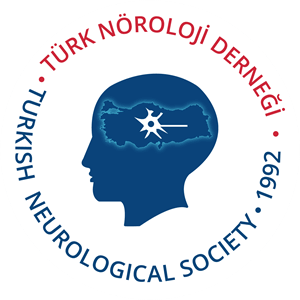Unveiling uncommon connections: Posterior drainage carotid cavernous fistula presenting as isolated oculomotor palsy
Arpit Agrawal1 , Chandradev Sahu2
, Chandradev Sahu2 , Abhijeet Kumar Kohat1
, Abhijeet Kumar Kohat1 , Anam Fatima2, Manisha Gupta1
, Anam Fatima2, Manisha Gupta1
1Department of Neurology, DKSPGI (Dau Kalyan Singh Postgraduate Institute), Raipur, Chhattisgarh, India
2Department of Radiology, PTJNMMC (Pandit Jawahar Lal Nehru Medical College), Raipur, Chhattisgarh, India
Keywords: Dural arteriovenous fistula, indirect carotid cavernous fistula, posterior drainage carotid-cavernous fistula.
Abstract
Isolated third nerve palsy with pupillary involvement is difficult to diagnose, particularly if neuroimaging studies appear normal. A posterior drainage carotid cavernous fistula (CCF) is often missed due to lack of ocular signs and orbital bruit. A 61-year-old female was admitted with a two-week history of insidious-onset, progressive drooping of the right eyelid and binocular double vision. On examination, the patient had complete ptosis of the right eyelid and right oculomotor nerve palsy. A CCF may not always present with ocular congestion; oculomotor palsy with pupillary involvement may be caused by a posterior drainage CCF, also known as a “white-eyed shunt.”
Introduction
Many factors can cause isolated oculomotor nerve palsy with pupillary involvement, the most life-threatening one being an intracranial aneurysm. A carotid cavernous fistula (CCF) is an abnormal vascular connection between the internal carotid artery or external carotid artery and the venous channels of the cavernous sinus.[1] Carotid cavernous fistulas are classified based on the arterial system involved, hemodynamics, and etiology.[2-4] A posterior drainage CCF is often missed as a potential cause due to unapparent congestive signs and orbit bruit.[5-7]
Case Report
A 61-year-old postmenopausal woman was admitted due to a two-week history of insidious-onset, progressive drooping of the right eyelid and binocular double vision. The patient had no periorbital pain or redness in the eyes, exophthalmos, or decreased visual acuity. The patient had no history of trauma, any iatrogenic intervention, or venous thrombosis. On examination, near complete ptosis of the right eyelid with restriction of adduction was observed. The right pupil was dilated with a 6-mm diameter and nonreactive to direct and indirect light reflexes, whereas the left pupil was 3 mm in diameter and normally reactive to light. The fundoscopy was normal. The patient did not have chemosis, proptosis, conjunctival injection, swollen eyelids, or ocular bruits. No other extraocular involvement or other cranial nerve involvement was noted. A compressive/congestive cause was considered due to the oculomotor nerve palsy with pupillary involvement; however, a 3 Tesla (3T) magnetic resonance imaging of the brain, cavernous sinus, and orbit was unrevealing. Additionally, cranial magnetic resonance angiography and venography were performed, which did not reveal any obvious abnormality. However, a strong clinical suspicion of compressive or congestive etiology led to the decision to perform digital subtraction angiography. Written informed consent was obtained from the patient.
The subsequent angiogram revealed an indirect dural fistula with feeders from the right middle meningeal artery (artery to cavernous sinus) and ascending pharyngeal artery communicating with the right cavernous sinus. Due to the rapid evolution of symptoms and significant disability due to ophthalmoplegia, we decided that the patient should undergo definitive treatment. Hence, the patient was treated with a transvenous coil and liquid embolization. A long sheath was taken into the internal jugular vein during the procedure with a diagnostic catheter in the inferior petrosal sinus. A superselective microcatheter was placed into the cavernous sinus, and subsequently, multiple coils were placed, and a liquid embolic agent (EVOM) was administered over 10 min. Combining coils and the liquid embolic agent reduced the cost and improved percolation into small venous channels.
A control angiogram from the external carotid artery showed complete occlusion of the indirect arteriovenous fistula.[8] At the four-week follow-up, there was a complete improvement of ptosis with only partial restriction of extraocular movement (Figure 1).
Discussion
Direct CCFs, which typically have a high flow, present with prominent ocular features such as chemosis and orbital bruit. Indirect fistulas, which are usually spontaneous, present with more subtle clinical signs. Our case can be classified into Barrow type C CCF, as there was a connection between the cavernous sinus and the dural branches of the external carotid artery. A literature review of similar cases is summarized in Table 1, and the Barrow classification is described in Table 2. A venous drainage-based classification system was developed to describe venous drainage patterns, symptomatology, treatment approach, and outcome more accurately.[3,9] Posterior/inferior drainage was defined primarily through the superior and inferior petrosal sinuses, pterygoid, and parapharyngeal plexus. Anterior drainage denotes drainage via the superior and inferior ophthalmic veins. Cortical drainage was defined as filling the superficial middle cerebral veins, peri mesencephalic, and cerebellar venous system.[3] Congestive symptoms are conspicuously absent if the increased fistular flow is directed posteriorly, leading to delayed diagnosis. The possible mechanisms for isolated oculomotor nerve palsy in indirect CCF can be compression of the ocular motor nerves, vascular steal, thrombosis, focal midbrain ischemia due to hemodynamic alterations, and congestion of the muscles.[10,11] Spontaneous CCFs account for up to 30% of all CCFs reported in the literature and are more common in postmenopausal patients. Thin-section magnetic resonance imaging is emerging as a sensitive tool for identifying CCF; findings include abnormal contour of the cavernous sinus, internal signal void of the cavernous sinus, prominent venous drainage flow, and orbital/ periorbital soft tissue swelling. However, it does not replace magnetic resonance angiography or computed tomography angiography.[12] A CCF may not always be present with ocular congestion; oculomotor palsy with pupillary involvement may be caused by a posterior drainage CCF, also known as a “white-eyed shunt,”[13] which can be easily missed unless specifically looked for with cerebral angiography.
In conclusion, we presented a patient with right oculomotor nerve palsy with pupillary involvement due to a right external carotid artery indirect dural fistula. The clinical presentation of CCFs primarily depends upon venous drainage pattern and shunt flow rate.
Cite this article as: Agrawal A, Sahu C, Kohat AK, Fatima A, Gupta M. Unveiling uncommon connections: Posterior drainage carotid cavernous fistula presenting as isolated oculomotor palsy. Turk J Neurol 2025;31(2):224-228. doi: 10.55697/tnd.2025.237.
The data that support the findings of this study are available from the corresponding author upon reasonable request.
All authors contributed equally to this article.
The authors declared no conflicts of interest with respect to the authorship and/or publication of this article.
The authors received no financial support for the research and/or authorship of this article.
References
- Ringer AJ, Salud L, Tomsick TA. Carotid cavernous fistulas: Anatomy, classification, and treatment. Neurosurg Clin N Am 2005;16:279-95, viii. doi: 10.1016/j. nec.2004.08.004.
- Barrow DL, Spector RH, Braun IF, Landman JA, Tindall SC, Tindall GT. Classification and treatment of spontaneous carotid-cavernous sinus fistulas. J Neurosurg 1985;62:248-56. doi: 10.3171/jns.1985.62.2.0248.
- Thomas AJ, Chua M, Fusco M, Ogilvy CS, Tubbs RS, Harrigan MR, et al. Proposal of venous drainagebased classification system for carotid cavernous fistulae with validity assessment in a multicenter cohort. Neurosurgery 2015;77:380-5. doi: 10.1227/ NEU.0000000000000829.
- Şahin RE, Aslan-Kara K, Onan HB, Bıçakcı Ş. A possible cause for the development of spontaneous carotid cavernous fistula: Wegener’s granulomatosis. Turk J Neurol 2023; 29:299-301. doi: 10.4274/ tnd.2023.93992.
- Acierno MD, Trobe JD, Cornblath WT, Gebarski SS. Painful oculomotor palsy caused by posteriordraining dural carotid cavernous fistulas. Arch Ophthalmol 1995;113:1045-9. doi: 10.1001/ archopht.1995.01100080097035.
- Chan Chung C, Wen DW, Chew TLT, See SJ. Incomplete third nerve palsy due to a carotid-cavernous fistula. Neurologist 2023;28:49-53. doi: 10.1097/ NRL.0000000000000437.
- Wu HC, Ro LS, Chen CJ, Chen ST, Lee TH, Chen YC, et al. Isolated ocular motor nerve palsy in dural carotidcavernous sinus fistula. Eur J Neurol 2006;13:1221-5. doi: 10.1111/j.1468-1331.2006.01478.x.
- Gemmete JJ, Chaudhary N, Pandey A, Ansari S. Treatment of carotid cavernous fistulas. Curr Treat Options Neurol 2010;12:43-53. doi: 10.1007/s11940-009- 0051-3.
- Stiebel-Kalish H, Setton A, Nimii Y, Kalish Y, Hartman J, Huna Bar-On R, et al. Cavernous sinus dural arteriovenous malformations: Patterns of venous drainage are related to clinical signs and symptoms. Ophthalmology 2002;109:1685-91. doi: 10.1016/s0161- 6420(02)01166-1.
- Miyachi S, Negoro M, Handa T, Sugita K. Dural carotid cavernous sinus fistula presenting as isolated oculomotor nerve palsy. Surg Neurol 1993;39:105-9. doi: 10.1016/0090-3019(93)90086-g.
- Miyagishima T, Hara T, Inoue M, Terano N, Ohno H, Okamoto K, et al. Pontine venous congestion due to dural arteriovenous fistula of the cavernous sinus: Case report and review of the literature. Surg Neurol Int 2012;3:53. doi: 10.4103/2152-7806.96076.
- Kim D, Choi YJ, Song Y, Chung SR, Baek JH, Lee JH. Thin-section MR imaging for carotid cavernous fistula. AJNR Am J Neuroradiol 2020;41:1599-605. doi: 10.3174/ ajnr.A6757.
- Hayashi S, Mashio K, Okamoto K. Case of white-eyed shunt carotid-cavernous sinus fistula mimicking optic neuritis. Clin Exp Neuroimmunol 2019;10:57-60.
- Kouichi O, Kurita H, Konishi Y, Shiokawa Y, Saito I. white-eyed shunt. Cerebrovasc Dis 2003;15:234. doi: 10.1159/000068835.
- Chu Wong GK, Chun Ho Yu S, Poon WS. Posteriordraining dural carotid cavernous fistulae: a possible cause of computed tomographic angiography negative isolated third nerve palsy. Clin Pract 2011;9:e110. doi: 10.4081/cp.2011.e110.
- Lin HL, Hu TT. Isolated third nerve palsy with pupillary involvement resulting from carotid-cavernous sinus fistula: A case report. Medicine (Baltimore) 2019;98:e14472. doi: 10.1097/MD.0000000000014472.






